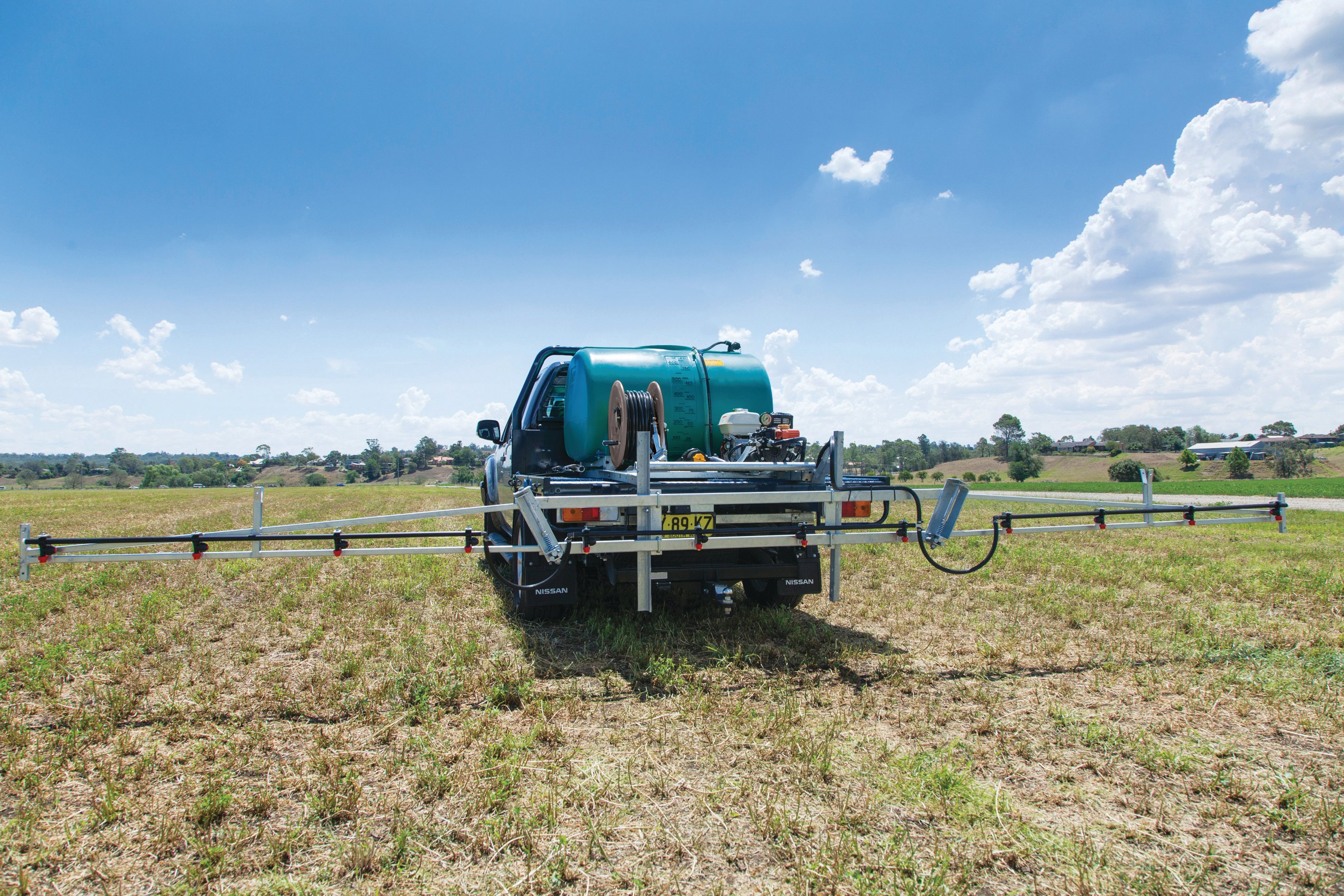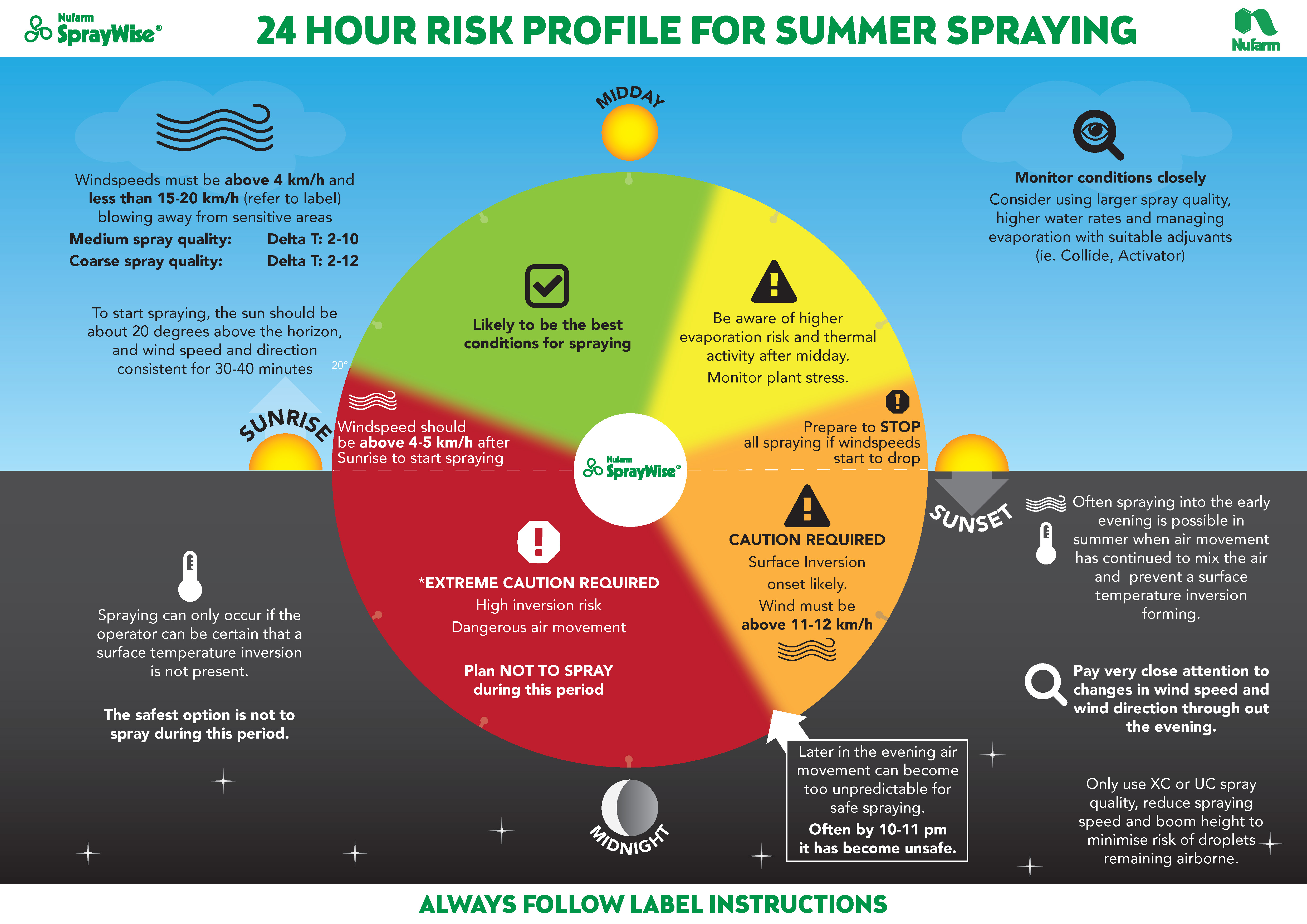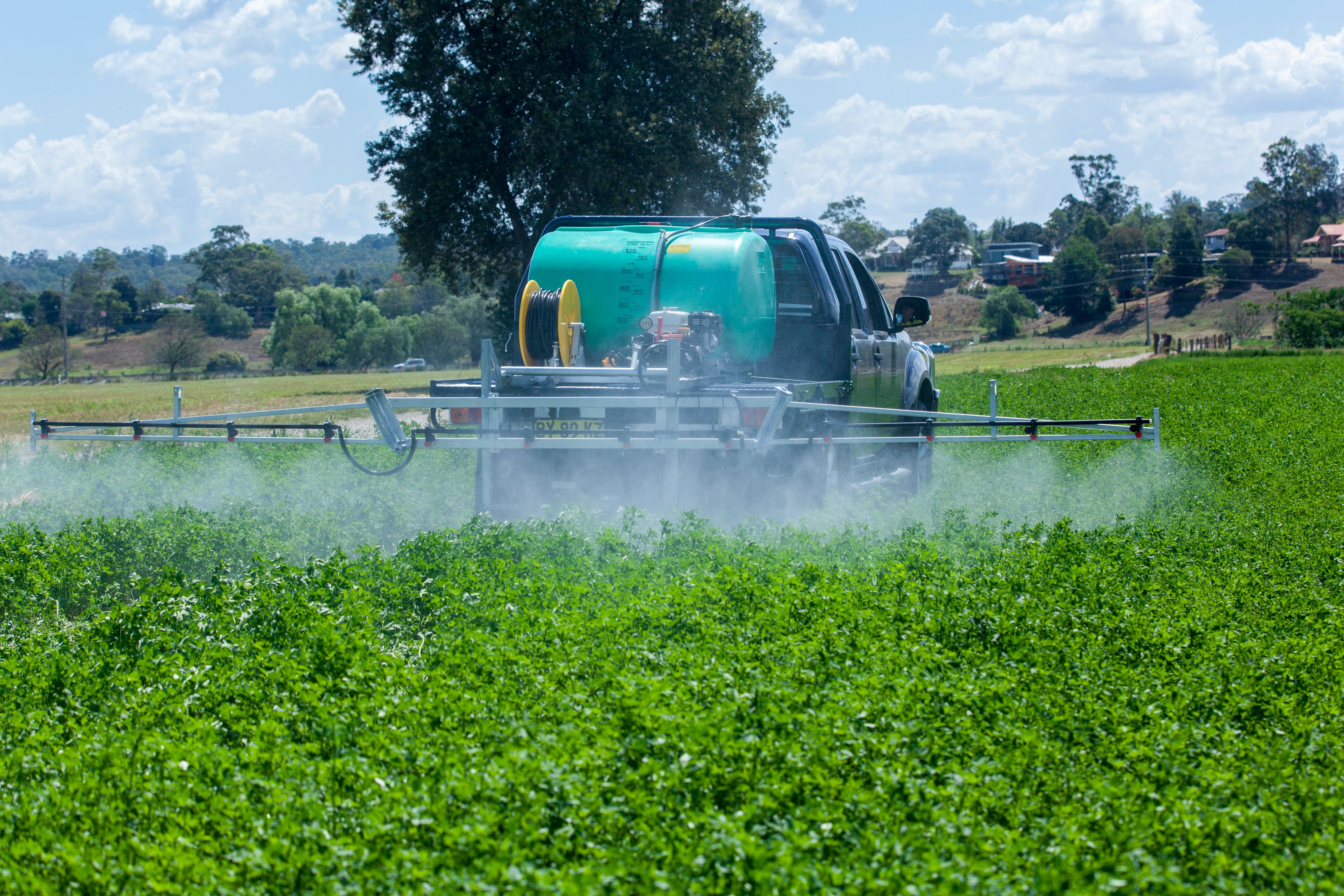With spring weeds starting to make their presence known, it is important that spraying applications are done as effectively as possible to reduce the numbers of survivors and also reduce the spread of herbicide resistance.
The correct spray application is paramount for reducing weed growth, and growers need to make sure their equipment and spray techniques are spot on. Reducing spray drift maximizes the amount of herbicides / pesticides reaching the intended target.
REDUCING SPRAY DRIFT
Not only is allowing spray drift costing money or potentially hitting non-intended targets such as cropping, livestock or natural environment, any herbicide that is not applied correctly or doesn't hit the intended weeds reduces it's efficiency and weeds may survive, or worse become resistant to herbicides because of the low dosage.
During the summer many farmers prefer night spraying as conditions are cooler, however this has it own problems. Spraying during the night is heavily cautioned against due to what is known as inversion risk.
During the day, warm air rises and with it any particles such as spray drift. This is usually light air, and mixes with cool air allowing for particles such as spray drift to become less potent than at ground level and spread evenly.
However, at the night, this reverses. As the ground cools, the air at ground level also cools but this is dense and doesn't rise. If there is any breeze or air movement, any particles within the air don't spread but rather move with the air. Thus if you are spraying at night, it is much more dangerous as the levels of spray drift particles are just as potent. It only takes 1% of products remaining within the air to cause off-target damage.

TEN TIPS FOR REDUCING SPRAY DRIFT
- Constantly monitor weather conditions.
- All products within the tank are mixed carefully.
- Understand the product's mode of action (how it reacts to living organism) and coverage requirements.
- Check the best method for spray control (nozzles with larger spray quality).
- Beware of weather conditions i.e. check inversion risk levels and wind speed.
- Use weather forecasts to inform your spray decisions.
- Ensure any adjacent areas such as cropping, buildings, livestock or other humans will not be at risk of spray drift.
- Optimum times for spraying is when sun is 20 degrees above the horizon and with wind speeds of up to 4-5km/hr has been consistent for 20-30 minutes.
- Set boom heights to achieve double overlap of spray patterns.
- Avoid spraying at high speeds.

Reference: https://weedsmart.org.au/spray-well-correct-nozzles-adjuvants-and-water-rates/



